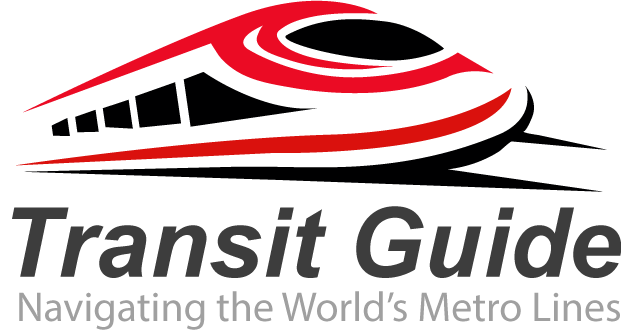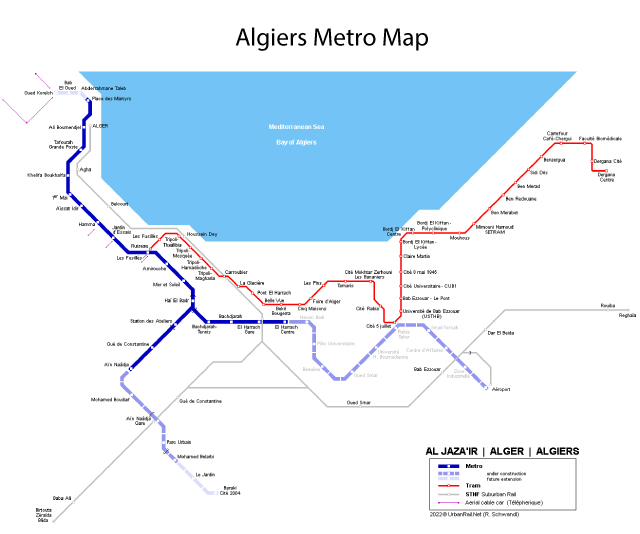The Algiers Metro represents a significant milestone in North African public transportation, serving as the second metro system to open in Africa, after the Cairo Metro. This modern rapid transit system connects key areas of Algeria’s capital city, offering residents and visitors an efficient way to navigate the bustling metropolis.
History and Development
Originally designed in the 1970s, it opened in 2011 after decades of delays due to financial difficulties and security issues. The system’s development was a lengthy process, with the metro finally inaugurated on 31 October 2011 after nearly three decades of development. Despite these challenges, the project came to fruition, transforming urban mobility in Algiers.
Current System Overview
The Algiers Metro currently operates as a single-line system with impressive coverage. The metro has 19 stations and spanning 18.5 km (11.5 mi), making it a substantial urban transit network. The system has grown through strategic phases, with the first phase of Line 1 opening from “Haï el Badr” to “Tafourah-Central Post Office” on 1 November 2011.
Key Expansions
The metro has undergone several important expansions since its initial opening. A 4-kilometre (2.5 mi) extension from “Haï el Badr” to “El Harrach Centre” opened for commercial service on 4 July 2015, significantly extending the system’s reach. The last expansion was on April 10, 2018 after test runs in January, continuing the network’s growth.
Passenger Usage and Performance
The Algiers Metro has proven popular among commuters, with the system moving 28.4 million passengers in 2016. Algiers Metro Enterprise (EMA) expects the line eventually to carry 300,000 passengers a day, demonstrating the system’s capacity for handling significant passenger volumes.
Operating Hours and Schedule
Travelers can rely on consistent service throughout the week. Metro works seven days a week, from 5:00 to 23:00, providing 18 hours of daily operation. However, this schedule is shortened during the holy month for Islamic population: Ramadan. When this happens, the Subway of Algiers only operates from 7:00 to 13:30.
The system offers efficient travel speeds, with trains travel at up to 70 km/h, allowing for fast travel on a variety of routes.
Ticketing and Fares
The Algiers Metro maintains affordable pricing for public transportation. Based on recent information, for purchasing a bus or metro ticket in Algiers it costs 0.27 €, though this cost can fall to 0.17 € and rise to 0.34 € depending on the periods of the year. Some sources indicate the fare is €1.40, making it affordable for most residents.
Key Stations and Connectivity
The central hub of the system is strategically located for maximum accessibility. La Grande Poste is located in Algier’s center of the city. It’s the intersection of all the routes that cover the main places in the city: Place des Martyres, Audin Place, Algier’s University, Tafourah bus station and the Wilaya of Algiers. This central station experiences the highest passenger traffic due to its comprehensive connectivity.
Future Development
The Algiers Metro continues to expand with planned extensions. Extension A involves extending the line by 1.7 km north of Algiers and includes two new stations in the heart of the old city, which will further improve access to historic areas of the capital.
Practical Travel Tips
For visitors to Algiers, the metro system provides French/Arabic bilingual navigation for central stations like Tafourah and Hamma, making it accessible to both French-speaking tourists and Arabic-speaking locals. The system serves as an excellent way to explore Algeria’s capital efficiently while avoiding traffic congestion.
The Algiers Metro stands as a testament to modern infrastructure development in North Africa, providing reliable, affordable public transportation that connects key areas of this historic Mediterranean city.

